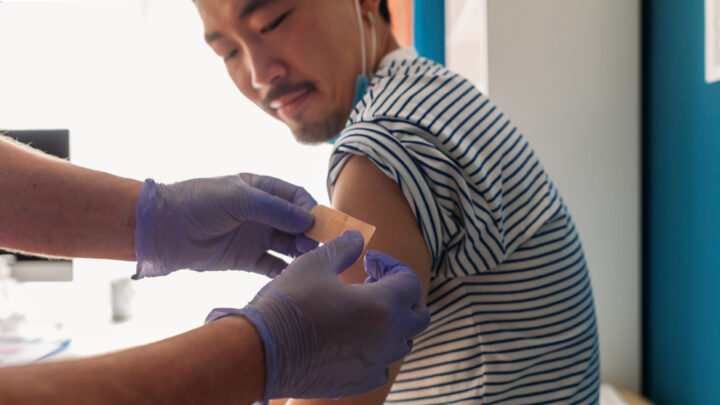
When taken as prescribed for HIV, pre-exposure prophylaxis (PrEP) reduces the risk of getting HIV from sex by about 99%. Now, patients have another PrEP option. For those who cannot or may not want to take oral PrEP, injectable PrEP provides another path to protection.
Injectable HIV PrEP is a long-acting medication that offers extended protection against HIV. Instead of a daily pill, patients receive injections of cabotegravir (CAB) 600 mg (brand name Apretude®) every other month.
The Centers for Disease Control and Prevention (CDC) recommends talking to all your sexually active patients about PrEP. Here are eight things you should know about injectable PrEP:
1. PrEP is now more accessible than ever. The United States Preventive Services Task Force issued a Grade A recommendation for PrEP. This means that most private health plans and Medicaid programs are required to cover PrEP services without cost sharing, copays, or deductibles.
2. Injectable PrEP is safe and effective. CAB has been proven safe for adults and adolescents who weigh at least 35 kg (77 lb).
3. Injectable PrEP is administered with a bimonthly injection. CAB is given as an intramuscular injection. It is initiated by a first injection, followed by a second injection 1 month after the first. Injections are continued every 2 months thereafter.
4. Patients who cannot—or prefer not to—take oral PrEP can benefit from injectable PrEP. CAB injections are a good option for people who have challenges taking oral PrEP as prescribed, have serious kidney disease that prevents the use of oral PrEP medication, or simply prefer a shot every 2 months instead of daily oral PrEP.
5. Side effects of injectable PrEP tend to be mild and short lived. In clinical trials, injection site reactions (e.g., pain, tenderness, local skin swelling) were frequently reported following CAB injections. These reactions are common, generally mild or moderate, and do not last long.
6. Regular CAB injections are vital to maintain protection. In trials, HIV infections have occurred among people who delayed receiving their injections for several months. Data are not yet available for CAB to estimate how long it takes to reach maximal protection against HIV acquisition.
7. Injectable PrEP should be part of a combination prevention plan. CDC recommends a regular schedule of screenings, tests, and discussions with patients to assess their needs and support their PrEP adherence. The Injectable PrEP Clinicians’ Quick Guide on HIV Nexus contains the schedule and other tools to support your decision to prescribe injectable PrEP.
8. Patients may qualify for medication assistance to cover PrEP costs. HIV Nexus provides a list of programs and services to help your patients pay for PrEP.
To learn more about which PrEP options might be right for your patients, visit HIV Nexus to access free CDC resources.
Check out what other health care providers are saying about injectable PrEP:
“Giving people more options makes them more empowered to take care of themselves. If someone is on and off PrEP because they’re like, ‘I can’t take the pill,’ ‘I feel nauseated with the pill,’ or ‘I just don’t want to remember to have to take something out of a bottle all the time,’ then you can say, ‘Did you know there’s an injection that you can get every two months?”
-Dr. Aniruddha (Anu) Hazra
“I am blown away at how many people are like, wait, there’s a pill or shot that you can take that’s 95% to 99% effective at preventing HIV through sex?”
-Dr. James Simmons














